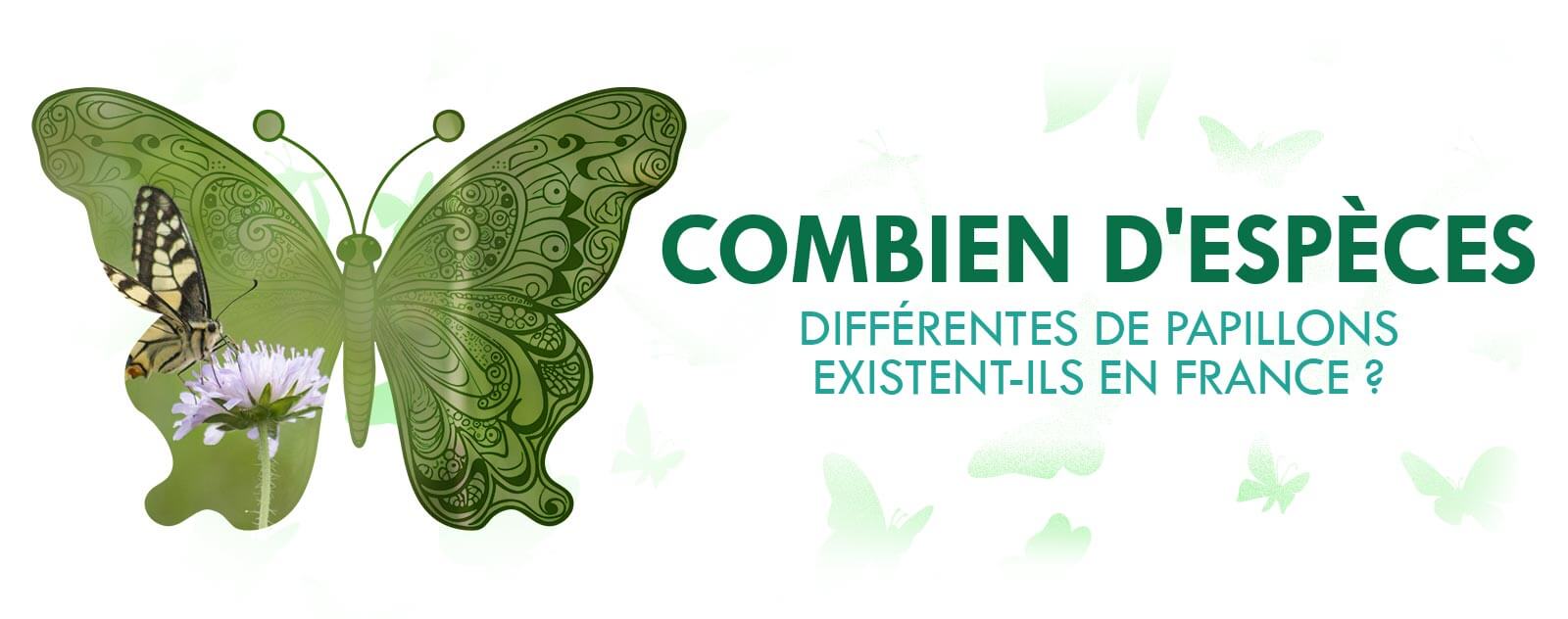The different butterflies in France
According to recent studies, more than 5,000 species of butterflies, including butterflies and moths, live in the country and play important roles in the ecosystems they inhabit. Entomologists and nature lovers see a fascinating spectacle of the richness of French lepidopteran fauna.
To find out more about the different species of butterflies that exist in France, we invite you to continue reading. We will also invite you to visit our butterfly news for more information if you too are looking for information on the different species.
We invite you to read our most read articles by clicking on one of the links just below:
Without further ado, let's start reading the article!
Butterflies and nocturnal butterflies differ significantly
The distinction between day butterflies (diurnal) and nocturnal butterflies (nocturnal) is essential to understand the diversity of species present in France. With around 250 species recorded in France, day butterflies are often the most colorful and the most visible, like the famous Swallowtail or the Peacock-du-jour.
Although they are generally less colorful, moths are notable for their great diversity, with thousands of species with different habits and appearances.
Presentation of 20 memorable butterflies in France : a journey to the heart of biodiversity
By presenting these 20 different butterflies, the article not only highlights the beauty and diversity of French wildlife, it also highlights the importance of conservation and offers practical advice so that everyone can contribute to protection. butterflies and the enrichment of biodiversity in its immediate environment.
France, thanks to its diverse landscapes, is home to a wide variety of butterflies, each of which has a history and a particularity that attracts entomologists and nature enthusiasts. Here are 20 emblematic species of French butterflies for an immersion in their world.
The Red Admiral butterfly (Vanessa atalanta) is a type of wolf

The wings of the Vulcan butterfly are black, edged in red and punctuated with white spots. This butterfly, which embodies transformation and resilience, often visits gardens and flowery places to feed on flower nectar.
The peacock of the day

The day peacock is a natural wonder that has wings adorned with ocelli that resemble peacock eyes. It likes nettles to lay its eggs, making it a valuable host plant.
The Swallowtail butterfly (Papilio machaon)

It is a large butterfly that can be seen in meadows and wetlands. It has yellow and black wings and a distinctive tail. The Swallowtail shows the health of ecosystems.
The Azure butterfly is a type of Polyommatus

Green spaces receive a touch of color thanks to the variety of iridescent Azurés blues. Legumes and wildflowers particularly attract their attention.
The butterfly Vanessa cardui, author of La Belle-Dame

This migratory butterfly travels long distances and is distinguished by its colorful wings with complex patterns. The Fair Lady is a symbol of adaptability and perseverance.
The Bindweed Sphinx butterfly (Agrius convolvuli) is a species of sphinx

With its elongated body and narrow wings, this moth is an excellent pollinator. It is frequently seen foraging on flowers at nightfall.
The lemon butterfly (Gonepteryx rhamni) is an insect

The lemon butterfly is a joyful sight in gardens with its vibrant yellow wings reminiscent of a cut lemon. It is one of the first butterflies to appear in spring.
The Cabbage Pigeon butterfly (Pieris brassicae) is a species of cabbage

It is common to come across this white butterfly with black-edged wings. Although it can be a challenge for gardeners, it is important for the ecosystem.
The Tircis butterfly is an Aegerian pararge

The Tircis butterfly, which has brown wings decorated with ocelli, is a regular in the undergrowth and forest edges. It is suitable for shady places.
The Little Mars Changing butterfly (Apatura ilia) is a stellar body

This butterfly, whose reflections vary from brown to purple depending on the angle of the light, is an interesting spectacle to watch and is particularly appreciated by nature photographers.
The Blue Argus butterfly, also called Polyommatus icarus

Despite its small size, the Blue Argus is remarkable by displaying its bright blue wings. It is attracted to wildflowers, which are actively involved in pollination.
The greater pearly butterfly (Argynnis aglaja)

This large pearly butterfly with pearly patterns on its wings is a treasure of the floral fields. It prefers wild flowers which contain a lot of nectar.
The Flambé butterfly (Iphiclides podalirius)

In gardens and orchards, the Flambé butterfly is a majestic sight with its large white and black wings, adorned with blue bands and dots.
The Half-Mourning butterfly is known as Melanargia galathea

The Half-mourning butterfly is an easily identifiable butterfly thanks to its black and white checkerboard wings. It is widespread in limestone meadows where there is a lot of sun.
Polygonia c-album "Le Robert-le-Diable"

It is unique because of its serrated wings and "C" shaped mark on the reverse. It likes to hide in gardens and hedges.
The butterfly Circus of Brintesia (The Silenus)

This large butterfly with chocolate brown wings blends into the environment in dry, sunny areas.
The Gassed butterfly (Aporia crataegi) is a shrub

The Gazé butterfly is an ethereal sight in orchards and flowering hedges, with its large white wings veined with black.
The Myrtil butterfly, or Maniola jurtina

It is common in fields and clearings to find this discreet butterfly with dark brown wings decorated with a small eyespot.
The Isabella butterfly is a species of Graellsia isabellae

This exceptional nocturnal butterfly, which has transparent wings veined with green, is a jewel of the pine forests, where it hides during the day.
The Phoenix butterfly (Tyria jacobaeae) is a marine animal

This nocturnal butterfly with bright red and black wings is often seen in damp areas, where it adds a pop of color.
Each Phoenix butterfly presented here is part of the richness of French biodiversity and highlights the importance of conserving natural habitats. By learning about these species, we can better appreciate the beauty of nature and the importance of each creature in ecological balance.
The fascinating existence of Lepidoptera in France
France, with its varied landscapes, is a paradise for Lepidoptera, a class of insects that includes butterflies and moths. Incredibly varied habitats, from humid coastal areas to mountainous regions, provide ideal conditions for a variety of butterfly species, both diurnal and nocturnal. The complex life cycles of these winged animals, which range from larva (caterpillar) to adult (imago), are crucial for ecological survival, such as pollination and measuring ecosystem health.
Diversity, astonishing and environmental roles
French lepidoptera, including famous species such as the Belle-Dame, the Mulberry Bombyx or the Bindweed Sphinx, play an important role in preserving biodiversity and the balance of natural habitats. Day butterflies, which have bright colors, and moths, which are smaller but equally important, play an important role in the pollination of many plants and serve as prey for other species, thus playing an important role in food chains. Moist habitats are crucial for the conservation of these insects, as they provide ideal living and breeding conditions.
Conservation and threats: preserving the variety of butterflies
Although butterflies are numerous in France, they face increasing threats, such as the destruction of their natural habitats and the excessive use of pesticides in agriculture. Conservation efforts aim to protect these essential species by emphasizing sustainable land management and raising public awareness of the importance of butterflies to biodiversity and ecosystems. Preserving butterfly diversity is essential to maintaining the ecological balance and health of the country's natural habitats.
In France, butterflies are suffering the effects of climate change
In France, the survival of butterflies faces a significant challenge due to climate change. Climate changes impact butterfly life cycles, the availability of their host plants and ecological interactions. According to research, in response to global warming, some species are migrating to higher altitudes or changing their ranges. These changes highlight the importance of adopting mitigation and adaptation measures to protect butterflies and the ecosystems on which they depend, highlighting the importance of ecological corridors and the conservation of diverse habitats.
Conservation and difficulties
Due to current environmental challenges, such as habitat loss, pesticide use and climate change, the preservation of Lepidoptera in France is an important issue. Butterfly diversity depends on the protection of natural areas and sustainable management of agricultural land. The goal of conservation programs is to preserve endangered species and preserve the ecosystems on which they depend. Education and public awareness are also crucial to preserving these delicate creatures and their environment.
Plans for the preservation of butterflies in France
France has a great diversity of butterfly species, which contribute to the ecological balance of its habitats thanks to its varied biodiversity. Conservation strategies are becoming essential due to increasing threats such as habitat fragmentation, climate change and intensive use of pesticides. The creation and management of nature reserves, the restoration of degraded habitats and the implementation of sustainable agricultural approaches that promote biodiversity are part of these approaches. Public awareness and education about the importance of butterflies and biodiversity in general is also crucial to encouraging conservation at a local scale.
Community participation in butterfly protection
In France, butterfly conservation depends on community mobilization. Butterfly monitoring programs, butterfly gardens and habitat restoration projects are examples of citizen initiatives that significantly contribute to the protection of local species. These projects not only encourage the active participation of local communities in conservation efforts, but also provide valuable data on the status of butterfly populations, helping researchers and policymakers develop more effective conservation strategies.
France is home to a variety of butterfly species which contribute to the richness of its biodiversity. From the beauty of butterflies to the discretion of moths, these fascinating animals play an important role in the French ecosystem.
It is essential to understand the importance of butterflies and the threats they face in order to preserve them and allow future generations to enjoy the beauty and diversity of butterflies in France.





